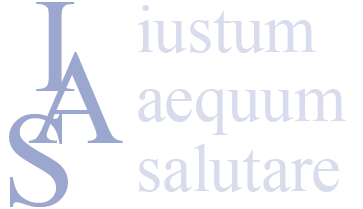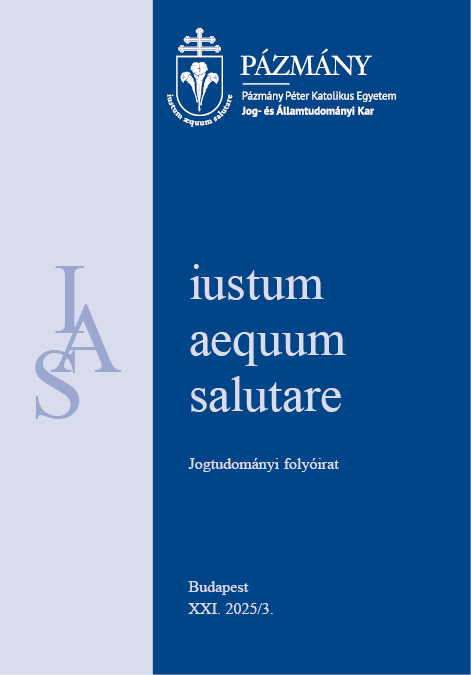Finding our first Commemorative Laws
Abstract
Although the number of commemorative laws in our legal system is relatively high today, as they contain little or no binding rules of conduct, they raise the question of the concept of law with elementary force. Can there be a place for historical memory in the law, or does the legislator only burden the legal system with it unnecessarily? In my study, however, I do not deal with these exciting theoretical problems, but focus on the historical tradition of our commemorative laws, first and foremost looking for the first legislation that can be clearly described as commemorative. I will then present the world of our early commemorative laws of the first half of the nineteenth century, grouping the legislative products of the diets of the estates under four headings: the commemorative laws on recording decisions of ecclesiastical relevance, on foundations, on the founding of our great national institutions, and the birth of the “modern” commemorative law. Finally, I will explain my position on why I consider the legal materials I have presented to be commemorative, despite the differing opinions of authoritative authors, which also explains why I am attempting to draw a comprehensive and contrasty initial arc in the historical development of our commemorative law. My work is primarily based on the legal materials researched from our historical law database and their systematisation according to the above-mentioned aspects – in this article, the reader can get acquainted with the material of the first chapter of my book “Our Commemorative Laws”, which is being prepared and is planned to be published only in 2027, and can express his opinion on it before the manuscript of the book will be closed.
References
Földi András – Hamza Gábor: A római jog története és institúciói. Budapest, Nemzeti Tankönyvkiadó, 1996.
Halász Iván – Schweitzer Gábor: Állami és nemzeti jelképek. In: Bába Iván (szerk.): Közszolgálati protokoll. I. Könyv: Alapvetés. Budapest, Nemzeti Közszolgálati Egyetem, 2018.
Halász Iván – Schweitzer Gábor: Szimbolika és közjog. Az állami és nemzeti jelképek helye a magyar alkotmányos rendszerben. Pozsony, Kalligram, 2010.
Hollósi Gábor: Történelem a törvénykönyv lapjain. A dualizmus korának emléktörvényei. Élet és Tudomány, 2025/10.
Hollósi, Gábor: A Horthy-korszak emléktörvényei. In: Kincses Katalin Mária (szerk.): XIX–XX. századi magyar történelmi kultuszok. Budapest, Line Design, 2024.
Hollósi, Gábor: A történelmi emlékezet az 1920. évi I. törvénycikk indokolásában. Jogtörténeti Szemle, 2019/1.
Hollósi, Gábor: Emléktörvényeink a népi demokráciától a rendszerváltoztatásig (1945–1989). In: Kincses Katalin Mária (szerk.): XIX–XX. századi magyar történelmi kultuszok II. Budapest, Line Design, 2025.
Igazságügyi Minisztérium: Módszertani útmutató a jogszabályszerkesztéshez. Magyar Közlöny, különszám. (1999. június 28.) 56.
Izsák-Somogyi Katalin: A magyar emlék(ezet)törvények rendszere. PhD értekezés. Budapest, Pázmány Péter Katolikus Egyetem Jog- és Államtudományi Kar Doktori Iskola, 2024.
Kampis György: Kodifikáció. Elmélet és gyakorlat. [Budapest], Unió Lap- és Könyvkiadó Kereskedelmi Kft., [1995].
Marina Bán: The Legal Governance of Historical Memory and the Rule of Law. PhD értekezés. Amsterdam, University of Amsterdam, 2020.
Szent László Király Dekrétomainak Első Könyve 38. Fejezet: A szent ünnepek megüléséről. https://tinyurl.com/e5n32c9b
Tóth Judit: Jelképes jogállam. Mozgó Világ, 2002/3.
Copyright (c) 2025 Gábor Hollósi

This work is licensed under a Creative Commons Attribution 4.0 International License.


